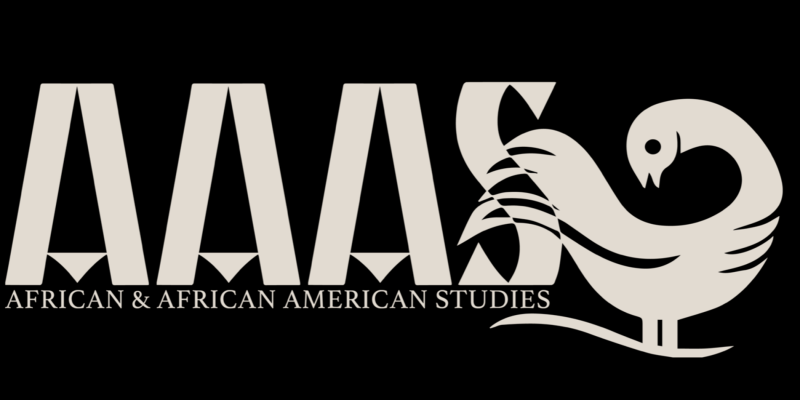In February 2021, a task force charged with recommending a new framework for the study of race recommended the departmentalization of the African and African American Studies (AAAS) program at Stanford. Now, the Committee for the Departmentalization of AAAS intends to send the departmentalization plan to Dean Debra Satz and Provost Persis Drell by the end of May, according to committee chair and English Professor Ato Quayson.
The University formed the Committee for the Departmentalization of AAAS following the task force recommendation, and the committee has spent months working toward the goal of establishing a Department of Black Studies.
The steps toward departmentalization come after more than 50 years of significant activism and pressure by student advocates, including the Black Student Union (BSU) and the Black Graduate Student Association (BGSA).
Kickstarting the multi-step process for approving new curricula at Stanford during this academic year would allow the AAAS department to begin operating in fall 2023, according to Quayson. Even so, Quayson wrote that “there are many things to be put in place before that,” including identifying appropriate space on campus, finding leadership for the department and hiring senior faculty and staff.
The committee invited chairs of AAAS and related departments from 12 peer institutions, including Harvard, Princeton and Columbia, to serve as advisories for the ongoing process, according to Quayson. The committee is also holding a wide range of consultations with faculty and other stakeholders at Stanford to inform their decisions, he added.
English professor and committee member Vaughn Rasberry expressed gratitude for these external sources who “graciously and generously” shared with the committee details of “their successes, setbacks, and guidance for how best to proceed.”
As the committee thinks through topics such as calibrating the relationship between African American Studies and African Studies, the role of language study in the curriculum and the importance of staff support, Rasberry wrote that the sources’ “insights have been immensely valuable for our own planning.”
Stanford’s AAAS department will be distinct from similar departments that exist at other universities, according to Quayson. Specifically, the new department will leverage the situational advantages Stanford has in Silicon Valley and aim to “encompass critique and community-building activities as well as knowledge production and dissemination,” he wrote.
The department’s curriculum will also combine both “breadth and depth requirements that will have students learning about the entire Black experience not only in the U.S. but also in Africa, the Caribbean, Latin America and Europe,” as well as encourage creative activities, such as literature, music and art, as core aspects of study, Quayson added.
Stanford leadership has been highly supportive of the planning group’s efforts, according to committee members. The administration provided funding for the committee’s consultations with leaders in top African and African American Studies departments, according to Rasberry. The University has also offered guidance about the departmentalization process and has connected “the committee with leadership who will help to move the department through University governance procedures,” Rasberry wrote.
“Most importantly, I think, the administration has also affirmed our shared commitment to forming one of the very best departments nationwide and worldwide,” he added.
AAAS is currently an interdisciplinary program (IDP), and there is no difference between a degree from a department and a degree from an IDP for undergraduates, according to Satz. Satz wrote that departmentalization is important because, as an administrative unit, “AAAS will be able to hire new faculty for the department, and some of these faculty will be located solely in the new department, their primary teaching obligations will be for the new department.”
Rasberry added that IDPs generally lack their own faculty and rely on the good will and voluntary participation of faculty who must negotiate between obligations to their home departments and the needs of IDPs.
“For some IDPs, this dynamic creates a challenge in sustaining a consistent curriculum and providing quality instruction,” he wrote.
Creating a Black Studies department, which will offer a wide range of degrees, “sends a powerful message: the University regards our teaching and research as highly significant to its mission,” Rasberry wrote.
During fall quarter, the committee adopted an “open-door” policy for those who wanted to learn about the process and share their ideas for the new department, according to Rasberry.
A number of students have been involved in the departmentalization process, including Mohammad Gumma ’22, graduate student representative and fourth-year sociology Ph.D. student Kimya Loder M.A. ’20 and committee research assistant Layo Laniyan ’22. Laniyan was previously the executive editor of The Daily. The committee also held its first “Visioning Session” on Oct. 22, 2021 and held another meeting specifically with students in African Studies on March 2, according to Quayson. The committee plans to meet with students in AAAS in the near future, Quayson added.
“Student’s input will be seriously taken into account as we think about the curricular and extra-curricular offerings of the department,” Quayson wrote.
But student involvement does not stop there, according to Rasberry.
“I would put the point even stronger: to create the very best, most inclusive and intellectually vibrant department — one that honors the efforts of student activists — we need students to continue making their voices heard,” Rasberry wrote.
BGSA member and fifth-year English Ph.D. student Casey Patterson echoed the importance of student involvement in the process, writing that programs and departments in AAAS have always relied on tireless student activism, from constant leadership of BGSA to the activation of support from students across the university through the Stanford Solidarity Network.
Patterson added that, while student representatives have been involved in planning meetings and the continuous progression of departmentalization, the greatest impact will always come from organizing.
“Talk to your classmates, TAs and trusted professors about what you want from the AAAS Department at Stanford,” Patterson wrote. “Work with student groups to petition the administration, to stage teach-ins and walk-outs and to make perfectly clear what a serious investment in AAAS looks like to you.”
